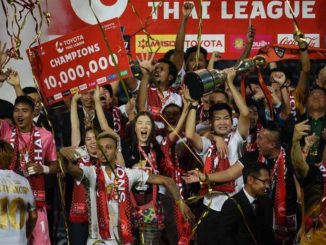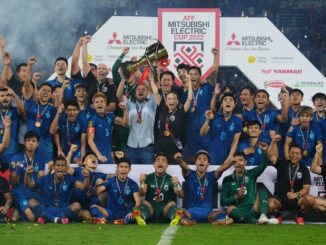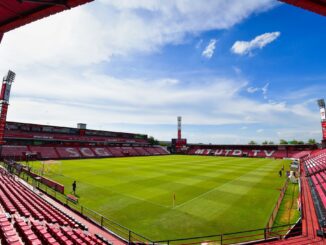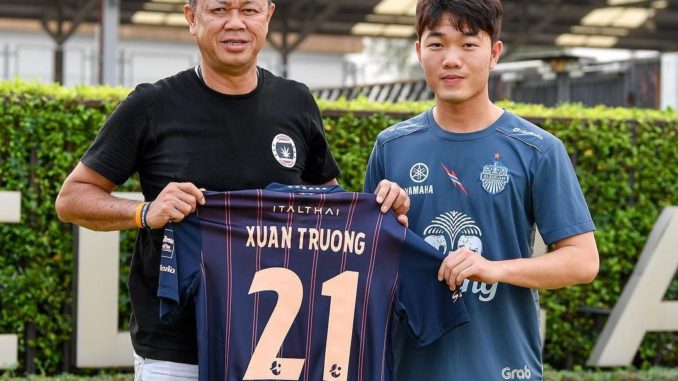
In a reversal of a trend that existed in the late 1990s and early 2000s, many talented players in the ASEAN region are being attracted by the salaries and profile of the Thai game.
In previous decades, the top Thai footballers – including legends like Kiatisuk Senamuang and Therdsak Chaiman – had to travel to neighbouring countries to develop their careers and earn better wages.
Kiatisuk played in Malaysia with Perlis, Singapore with Singapore Armed Forces and then had a hugely successful spell with Hoang Anh Gia Lai in Vietnam. Therdsak is fondly remembered for his AFC Champions League heroics at BEC Tero Sasana in 2003, but he soon spent a year in the V-League before a four-year stint at Singapore Armed Forces.
Other players of that era who spent much of their careers with teams in the ASEAN region include Sutee Sukomsit, Dusit Chalermsan and Totchtawan Sripan.
Since the introduction of a nationwide Thai League in 2007, the best Thai players have no longer needed to leave their country to have successful football careers. And when the Thai League introduced a dedicated ASEAN quota in 2018, it was an opportunity to find out if the Thai League would be as attractive to Singaporean, Malaysian and Vietnamese players as their leagues were to Thai stars more than a decade ago.
This looked like an innovative way to strengthen the league both in quality and in regional profile. But there was limited success in that first year as Bangkok United’s Filipino goalkeeper Michael Falkesgaard and Police Tero’s Myanmar striker Aung Thu were the only two players to make a strong impact, while another Filipino in Mark Hartmann enjoyed modest success at Ubon UMT United.
Many others saw their game time very limited, while Myanmar striker Kyaw Ko Ko’s season was almost completely wiped out by injury at Chiang Rai United. Vietnam’s Hoang Vu Sansom did not even make it to the end of March at Buriram United before returning to Hanoi FC.
Despite an unspectacular start, clubs were allowed to expand the quota in 2019, with permission to register an unlimited number of ASEAN players and to play up to three of them at any time.
At the start of the 2019 season, Thai League deputy CEO Benjamin Tan told The Asian Game podcast that the purpose of this move was to make the league “more attractive” and to exploit “potential commercial opportunities”. The impact has grown slowly, but surely.
This year, Vietnam goalkeeper Dang Van Lam quickly established himself as Muangthong United’s first choice goalkeeper. Philippines midfielder Iain Ramsay made himself a regular starter at Sukhothai, while his fellow Filipino Amin Nazari was an important squad member for Ratchaburi. After a season at Udon Thani FC, Singapore’s veteran centre-back Baihakki Khaizan was a key man for T1 new boys Trat FC and another Singaporean defender – Irfan Fandi – flourished with BG Pathum United in T2.
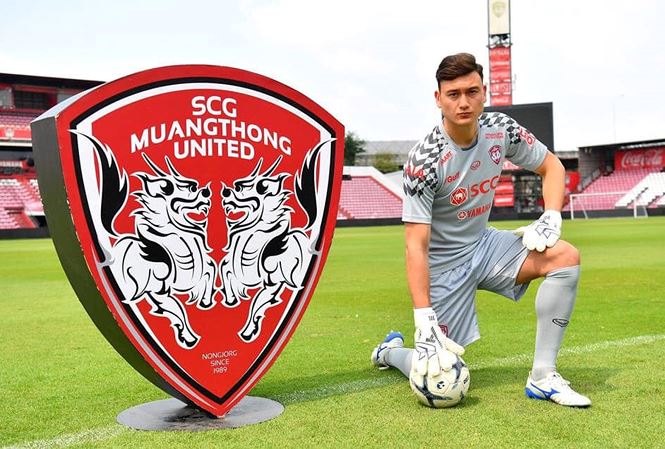
Myanmar defender Zaw Min Tun was regularly involved at Chonburi although his compatriot Si Thu Aung had limited game time. Laos skipper Soukaphone Vongchiengkam was in and out of the first XI at Chainat.
But the overall picture has been mixed. Buriram United took advantage of the quota by adding Philippines defender Stéphane Palla and Vietnam midfielder Luong Xuan Truong to a squad that already contained Philippines striker Javier Patino.
Palla made several starts at the beginning of the season but fell out of favour, and it was the same story for Xuan Truong, who left the club mid-year. Patino stayed in the country but headed to Ratchaburi after finding his game time limited at the Thunder Castle. Ratchaburi also recruited Thein Than Win from Myanmar but he returned to his parent club Yadanarbon without making an appearance.
Muangthong United brought Aung Thu from Police Tero but he failed to make an impact and is set to return to Tero in 2020. Malaysia’s Curran Singh Ferns joined Sukhothai in 2018 but was a peripheral figure before leaving in 2019. Indonesian defender Yanto Basna took time to establish himself at the same club.
There were a number of mid-season moves for Azkals stars, several of which were successful. Martin Steuble joined Port FC to fill in for the injured Kevin Deeromram and the experienced full-back made a positive impression in the second half of 2019.
Kevin Ingreso arrived at Buriram and the midfielder started to establish himself towards the end of the season. Goalkeeper Patrick Deyto and centre-back Alvaro Silva helped improve Suphanburi’s backline for a period, while wing-back Daisuke Sato was part of Muangthong United’s revival under Alexandre Gama.
However, questions still have to be asked about the overall image that is being created.
As things stand, T1 is a place where ASEAN players will generally find themselves in the squad but not in the starting XI. This is not an appealing prospect to players with ambition.
It was especially confusing to see Xuan Truong and Patino used so sparingly at Buriram, given the former champions’ indifferent form in the first half of 2019.
It was the same story for Aung Thu – widely considered the best player in his home country. Muangthong suffered their worst ever start to a T1 season but the Myanmar striker rarely made the first XI.
A move to T1 may be partly motivated by finances but it does not always look like a great place for many ASEAN players to develop their careers.
The predominance of imports from the Philippines may not have been what Benjamin Tan had in mind when he talked of commercial opportunities. Football has little popularity in the country, so the presence of so many Filipinos seems unlikely to create a stir in Manila and beyond.
Easier cultural adaptation may have been an expectation of a signing from Southeast Asia but, ironically, most of the successful imports grew up elsewhere. As has been well-documented, most of the Filipino national side are foreign-born and raised and even Vietnam’s Dang Van Lam originally hails from Russia.
Perhaps the wider international experience of many of these players has helped them settle better than those who just had to make a journey of under two hours.
The language barrier may also be an issue for some players from within the region. While Thai is the dominant language, English and Portuguese can be widely spoken in some club dressing rooms. Being unable to speak more than one language could be a severe hindrance to communication.
The ASEAN quota has generated interest from the region and provides a greater pool of talent for Thai clubs to choose from. However, team selection is suggesting that many of the players recruited are not good enough to become first-team regulars in T1.
The 2020 season will be a vital measure of the project’s impact as it enters its third year. The transfer window has demonstrated that interest in the ASEAN players remains high, with several staying put and much internal movement expected.
It has been confirmed that Steuble is staying on at Port and Zaw Min Tun’s has moved north to Sukhothai. Sukhothai have also brought in Cambodia’s Thierry Chanta Bin from Terrenganu in Malaysia, while many other transfers are expected to be confirmed in the weeks ahead as rumours become facts. Some of these may turn out to be solid signings but they may not be box office.
While the Thai League has demonstrated its appeal to many Azkals, Singapore and Myanmar stars, it cannot truly claim to be able to attract the best of ASEAN talent.
Vietnam’s brightest prospect Nguyen Quang Hai will surely be looking beyond Thailand as he ponders a potential move from Hanoi FC. Malaysia’s top young star Safawi Rasid is guaranteed AFC Champions League football and excellent facilities at Johor Darul Ta’zim and may not see any T1 club as a step up.
With the J.League rather than the V-League and S.League now attracting the top Thai players, times have changed significantly and in 2020, the K-League is expected to be more proactive as it has introduced an ASEAN quota of its own.
The Thai League has a hard battle on its hands if it wants to bring in the genuine best of ASEAN as clubs in Malaysia and Vietnam generally seem able to hold on to their finest talents, while stronger leagues hover.
Loosening the limitations on signings within Southeast Asia was a proactive move and one that should arguably be a long-term policy.
The main question mark is over the recruitment at some clubs where ASEAN signings seem to be padding out squad numbers rather than providing star quality.
Photo: Buriram United
Listen to Thai League deputy CEO Benjamin Tan on Episode 26 of The Asian Game podcast


